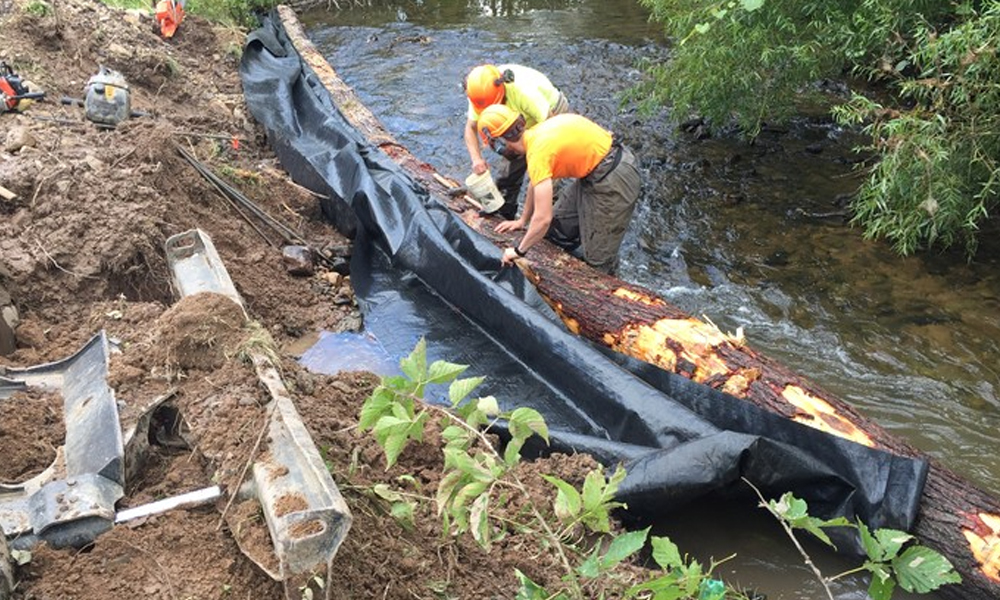Lost Creek Golf Club in Juniata County is unusual because a high quality, extremely productive wild trout stream runs through it, and Penn State turfgrass scientists recently developed a nutrient management plan for the course to protect the creek.
The innovative project — believed to be the first comprehensive nutrient management plan created for a Pennsylvania golf course — was funded by the Chesapeake Bay program and was part of the Juniata County Conservation District’s restoration of the Lost Creek watershed. State environmental officials hope that the private/public cooperative project will serve as a model for the 600 or so other Pennsylvania golf courses to follow in a wider effort to protect and enhance water quality by limiting the runoff of nutrients.
“In the grand scheme of the Chesapeake Bay restoration program, this was a very small project, and yet it can serve as an example and perhaps a template for other golf clubs to protect water quality — we think that it’s a significant thing,” said Pete Landschoot, professor of turfgrass management in the College of Agricultural Sciences. “This effort was unique because it included water monitoring and a stream bank restoration project on the course.”
Located in Fayette Township just north of Route 35 in Oakland Mills, Lost Creek Golf Club currently has more than 100 members, and golf is available to the public for a fee. The 18-hole course opened in 1965 and was built on land that previously was farmed as pasture. The property is approximately 150 acres and is surrounded by farmland and some wooded areas.
A special feature of the golf course is Lost Creek — a stream that supports a robust, reproducing population of brown trout — which enters the northeast corner of the course near the seventh-hole green, then proceeds south through a wooded area along the eighth fairway before cutting through mostly open areas on the southern portion of the course.
Lost Creek is an important part of the golf course, Landschoot pointed out, creating interest and strategy and affecting play on about a third of the holes on the course.
The stream floods on occasion, and during periods of peak flow some stream bank erosion occurs, he noted. Efforts are underway to stabilize stream banks in several locations on the course, and course Superintendent Tom Troutman has been working with Penn State to achieve improved fertilizer efficiency and eliminate runoff of nitrogen and phosphorus into Lost Creek.
“A golf course nutrient management plan is a document that helps superintendents keep track of the nutrient status of soils and turfgrasses and provides a strategy for meeting their nutrient requirements through proper application timing and amounts of fertilizer,” Landschoot said.
“Nutrient management plans can be relatively simple or complex depending on the goals of golf course operation,” he said. “We hope to work with many more courses in developing such plans in the coming year.
Image Caption and Credit: This effort was unique because it included water monitoring and a stream bank restoration project on Lost Creek — categorized as one of the state’s highest quality, most productive wild-trout streams — within the golf course. IMAGE: PETE LANDSCHOOT



























